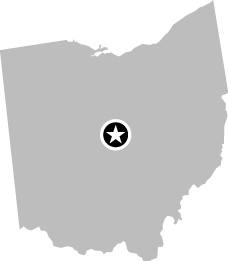Ohio
115
Early Television Museum, Hillard, OH
 40° 2′ 3.67″ N, 83° 9′ 41.17″ W
40° 2′ 3.67″ N, 83° 9′ 41.17″ W
![]()
![]()
What’s In, Not On, the Box
There are many museums of television around the world, but the Early Television Museum is the most fun for the scientific traveler: it’s dedicated to the mechanics and electronics of television, as opposed to the stars who appear on the small screen. And the museum is hands-on, with a demonstration of 1930s television technology.
The museum’s collection begins with the mechanical television sets of the 1920s and 1930s, which had between 30 and 60 lines (compared with 480 visible lines on a conventional NTSC TV set). The museum’s collection includes a working 1930 Baird Televisor (which originally came as a kit; see Figure 115-1), and a Davin Tri Standard built from articles that appeared in Popular Mechanics at the end of 1928. Many other TVs from this era are on display and in working order.

Figure 115-1. 1930 Baird televisor; courtesy of the Early Television Museum
The museum’s collection continues with black-and-white electronic televisions starting in 1936. There’s a large collection of U.S. televisions as well as a collection of British, European, and South American sets. Many of these are also in working order, as the Early Television Foundation (which runs the museum) works to keep history alive by restoring or repairing its exhibits.
The first color television sets on display date to the early 1950s and include an operational RCA CT-100 and a Westinghouse H840CK15: the first two color televisions made available to the public in 1954.
The transmitting side of TV is not overlooked, either. There’s a collection of cameras, monitors, and test equipment, and another of TV tubes, antennas, and accessories. There’s even a mobile TV transmission van dating from 1948.
And no visitor should miss the chance to appear on 1930s television. The museum has restored an RCA flying spot camera, which traces a spot of light over the visitor’s face to build up an image. Stand in front of this camera, and your face will appear on a working 60-line 1930 RCA television set.
Practical Information
The museum is free, but donations are always encouraged. Information about visiting can be found at http://www.earlytelevision.org/. Each May, the Early Television Foundation (which runs the museum) organizes an Early Television Convention, with presentations covering television technology and an auction of TV parts.